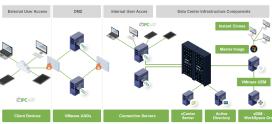
Migrating your IT Services to Cloud
Cloud migration is a process that absolutely every single business is going through nowadays and this is certainly a wise choice. Cloud computing has proven over the years its vast capabilities, one of which, is the fact that it allows a business or organization to move the entirety of its IT related functionalities online thereby enabling access to said functionalities and features from absolutely anywhere with a functioning internet connection.
The goal of cloud migration is essentially to move all digital business and organizational operations onto the cloud and, while doing so can initially take a bit of time, it is absolutely worth the effort in the long run due to the seemingly endless array of benefits that the cloud actually has to offer.
Cloud migration is certainly a process that can be worth any organization’s while, however, it’s important to remember that it must be executed properly in order to avoid potential system breaking issues in the long-run. A successful migration onto the cloud requires a thorough and detailed strategy detailing how each individual business resource will be ported to the cloud.
The very first step in any cloud migration, however, is a complete ground-up evaluation of performance and system requirements so that a company can determine what particular type of cloud service would be the most preferable for them. Proper planning can be a time-consuming process but it’s something that can enable businesses to save a great deal of money on cloud migration whereas a poorly planned execution would usually end up costing significantly more than it should due to initially unfactored costs.
With all that being said, it’s important to highlight that there’s no one-size-fits-all cloud migration solution for everyone, there are actually four primary types of cloud migration and these are as follows:
Lift and Shift
Lift and Shift is essentially among the most straightforward executions of cloud migration there is. The objective of this particular migration is to move from hardware storage onto cloud storage which, in turn, saves quite a lot of costs.
SaaS
SaaS, or Software as a Service, is when a particular company or organization ends up completely outsourcing applications to a cloud service provider that’s specifically proficient in handling applications of the sort and, by doing so, businesses are able to focus more on their core competencies and maintaining growth.
Application Refactoring
Simply put, application refactoring is when a certain application that’s been developed in the past is refactored to have functionality that’s compatible with cloud services. Successfully executing this migration generally ends up giving applications a great deal of additional functionality and enhances their performance.
Replatforming
Replatforming is for businesses and enterprises who’d like to capitalize as much as they possibly can on the benefits of cloud computing. Replatforming essentially means to build an application from the ground up to work primarily with cloud computing services and doing so has an array of benefits.
Overall, while cloud migration is certainly a process that can be worth the while of any business or organization, it’s essential to highlight that it should only be done via experts who are familiar with every single step of the process. Fortunately, however, there are several renowned cloud migration service providers available nowadays such as AMS Networks through which any business can seamlessly transition to the cloud.
Contact us today to learn how AMS Networks can help you get to the cloud seamlessly.



